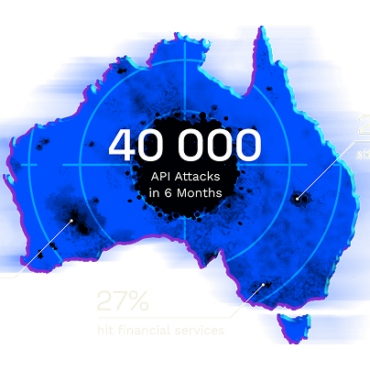Terraform vs Ansible
Updated 2 Jun 2022
To effectively compete in the software development industry and meet ever-increasing client demands, rapid product delivery with ongoing iterations is now required. Interoperability is frequently hampered by the siloed nature of development and operations teams.
The development and operations (DevOps) paradigm focuses on bringing both teams together to improve the efficiency and speed of building and publishing products. Teams can use DevOps tools to automate the software development process.
This is accomplished by putting in place a technology stack with tooling that gives developers more control over complex development environments at scale. While the requirement for a reliable DevOps tool is critical, finding one that matches your needs is a time-consuming procedure.
In this blog post, we’ll look into what Ansible and Terraform have to offer and how they can even be used together. This should make selecting a viable DevOps solution a lot easier.
What is Terraform?
Immediately after AWS introduced CloudFormation in 2011, those at HashiCorp foresaw the need for an open source, cloud-agnostic solution; a tool that could provide the same workflows, no matter what cloud you were using. Jump to 2014, and they released Terraform 0.1, an open source, cloud-agnostic infrastructure as code solution.
Terraform is a HashiCorp-developed syntax for defining infrastructure and services that may be hosted on-premises or in the cloud. You can utilize the DevOps tool to configure everything from Amazon services to VMware ESXi virtual machines to Cloudflare DNS entries.
Terraform is an open-source infrastructure-as-code software solution that provides a standardized command-line interface (CLI) workflow for managing multiple cloud services. Cloud application programming interfaces (APIs) are codified into declarative configuration files by the DevOps tool.
Terraform users use a programming language called HashiCorp configuration language (HCL) to define how to build, update, replace, and delete resources. HCL is an interpreted language that is intended to be more forgiving and user-friendly than Java or Kotlin. HCL was created with the goal of allowing DevOps personnel with little or no coding knowledge to easily pick up the syntax.
Key Features
- Using expressions, parameters, and blocks, you may build concise descriptions of resources in HashiCorp Configuration Language (HCL).
- Build new resources, eliminate those that are no longer needed, and manage existing ones using infrastructure as code to control the entire lifecycle.
- You can apply changes to many cloud providers using the command “terraform apply” to get the configuration to the desired state.
- Improve huge infrastructure performance, keep track of metadata, and map real resources to your setup.
What is Ansible?
Originally from Red Hat, Ansible is a similar IaC management tool to Terraform, however, it takes a procedural approach, which distinguishes it from Terraform.
User-defined stages are utilized in a configuration by Ansible’s procedural technique to accomplish the desired state or change. As a result, it’s perfect for adding new installations or software to existing networks.
Ansible is an agentless system that communicates via SSH or other authentication methods. As a result, it is both light and efficient. Ansible does require Python to be installed on targets because it uses JSON to install modules, however, these small modules are immediately removed once Ansible has completed its task.
Endpoint protection, orchestration, network, and security automation, continuous delivery, application deployment, configuration management, and provisioning are some of the use cases for this DevOps software.
Key Features
- You can make deploying the latest certified modules easier with Ansible Content Collections (precomposed modules and roles around specific topic areas).
- Ansible Content Tools makes it easy to create and deploy execution environments.
- Automation Controller serves as the control plane for the Ansible platform, helping to standardize how automation is started, deployed, delegated, and audited.
- You can automate at scale in a cloud-native approach using Automation Mesh. The capability allows you to plan sophisticated, distributed, or remote automation installations while also providing visibility, control, and reporting.
- Provision, manage and retire automation resources for delivery and modeling with the Automation Services Catalog.
Which is the better IaC tool?
Terraform or Ansible should be chosen depending on your company’s specific needs and current infrastructure.
Terraform is great for maintaining a constant state within your infrastructure without much interaction because it is designed on a declarative approach. This is also true when it comes to developing an infrastructure from the ground up and achieving a specific state.
The procedural approach of Ansible is designed for people that need to manage and configure their infrastructure in a way that allows it to evolve and change over time. Ansible outperforms Terraform when it comes to installing software or upgrades to an already setup environment.
When it comes to ease of use, Ansible is largely regarded as the more straightforward of the two. There is a new web-based UI that is based on a command-line interface, but it does not have all of the functions of the original command-line tool. Terraform, on the other hand, is extremely streamlined and user-friendly. As a result, Ansible only has a tiny advantage here.
These two instruments, as previously indicated, are best suited for different jobs. Both are fully featured and secure, thus the choice is essentially between a tool that concentrates on provisioning and orchestration or a tool that focuses on specialized configuration management.
How and when to combine Terraform and Ansible
The right tool for the specific job should always be selected. However, Ansible and Terraform are two tools that are frequently used in tandem. It’s not a binary choice between using Ansible and Terraform in your DevOps stack.
DevOps experts should always utilize the best tool for the job. While we are comparing them, two tools that are regularly used together are Ansible and Terraform. In your DevOps stack, you don’t have to choose between Ansible and Terraform necessarily.
Create resources and services with Terraform, then, use Ansible to configure the Terraform-created resources.
Consider the case where you need to create an Amazon Elastic Compute Cloud (EC2) instance for infrastructure. You’ll also need to set up a MySQL server on that machine and configure it with a number of port settings, security constraints, and performance optimization factors.
In this case, Terraform should be used to define how to establish a virtual machine in the AWS cloud as an EC2 instance. The MySQL database would then be installed and configured using Ansible. As you can see, Ansible and Terraform each solve a different DevOps issue. They work together rather than against each other.
Conclusion
Any DevOps or development, security, and operations (DevSecOps) team’s toolkit should include effective DevOps software. Provisioning, continuous delivery, application deployment, endpoint security, and orchestration are just a few of the labor-intensive development procedures that may be automated with a DevOps platform.
While Terraform’s fundamental competency is supplying infrastructure across various clouds with more than 200 providers, Ansible excels at both configuration management and provisioning. As a result, a model combining Ansible for configuration management and Terraform for orchestration services is a solid starting point.
Whether you use a single tool or a combination of the two, your decision should be based on the job requirements and the best potential result.



